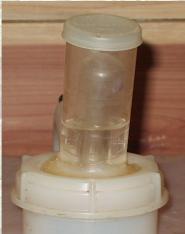Home Brewing - Part 1
Most homesteaders I know, myself included, are not snobs when it comes to making wine. Most of us are not wine connoisseurs; we just like to have a little touch of spirits every now and then.
Home wine making does not have to have expensive, special equipment. In fact, most everything you need can be purchased at the local super center.
What you will need is a brewing vessel, an air lock, and a quart (or larger) jar. Sure, you can go to a brew shop and buy everything in a kit, and some super centers also have the kits, but trust me, it's not necessary.
The Vessel:
Purchase the largest carboy of bottled water at the grocery store or super center. This should be at least three gallons in size or better yet, five or seven. This will be your brewing vessel.
The Air Lock:
While you're at the super center, purchase a six foot length of aquarium tubing and a tube of silicone caulk. When you get home, cut the aquarium tubing in half to make two three foot lengths. One will be for your air lock; the second will be your siphon hose.
Remove the screw on lid from the carboy you just purchased. Use a drill to center a hole in the lid that matches the diameter of your aquarium tubing. (Usually 1/8 inch)
Stuff one end of your tubing into the hole, extending the tubing about three inches inside the cap. Use the silicone caulking to seal around the opening, on both the top and bottom, and let sit for a day to cure. You now have your air lock.
The Quart Jar:
This can be anything from a canning jar to an old mayonnaise jar. It can be larger than a quart, but not smaller. Once your wine is started, you will fill this jar half full of water and place the free end of your aquarium tubing into it to allow the fermenting gasses to dissipate. When the water stops bubbling, you will know your wine has finished 'cooking'.


